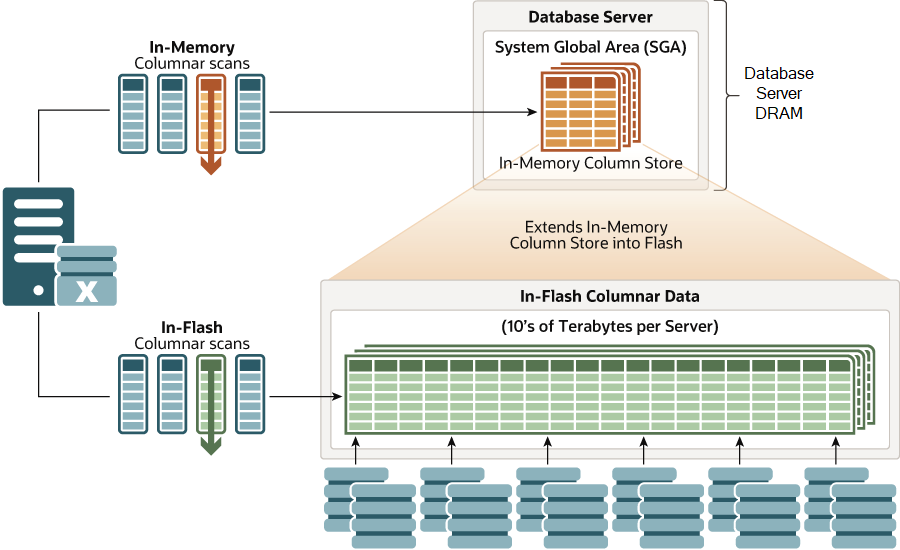1.2.9 In-Memory Columnar Format Support
In an Oracle Exadata environment, the data is automatically stored in In-Memory columnar format in the flash cache when it will improve performance.
Oracle Exadata supports all of the In-Memory optimizations, such as accessing only the compressed columns required, SIMD vector processing, storage indexes, and so on.
If you set the INMEMORY_SIZE database initialization parameter to a non-zero value (requires the Oracle Database In-Memory option), then objects accessed using a Smart Scan are brought into the flash cache and are automatically converted into the In-Memory columnar format. The data is converted initially into a columnar cache format, which is different from Oracle Database In-Memory’s columnar format. The data is rewritten in the background into Oracle Database In-Memory columnar format. As a result, all subsequent accesses to the data benefit from all of the In-Memory optimizations when that data is retrieved from the flash cache.
Any write to an in-memory table does not invalidate the entire columnar cache of that table. It only invalidates the columnar cache unit of the disk region in which the block resides. For subsequent scans after a table update, a large part of the table is still in the columnar cache. The scans can still make use of the columnar cache, except for the units in which the writes were made. For those units, the query uses the original block version to get the data. After a sufficient number of scans, the invalidated columnar cache units are automatically repopulated in the columnar format.
A new segment-level attribute, CELLMEMORY, has also been introduced to help control which objects should not be populated into flash using the In-Memory columnar format and which type of compression should be used. Just like the INMEMORY attribute, you can specify different compression levels as sub-clauses to the CELLMEMORY attribute. However, not all of the INMEMORY compression levels are available; only MEMCOMPRESS FOR QUERY LOW and MEMCOMPRESS FOR CAPACITY LOW (default). You specify the CELLMEMORY attribute using a SQL command, such as the following:
ALTER TABLE trades CELLMEMORY MEMCOMPRESS FOR QUERY LOWThe PRIORTY sub-clause available with Oracle Database In-Memory is not available on Oracle Exadata because the process of populating the flash cache on Exadata storage servers if different from populating DRAM in the In-Memory column store on Oracle Database servers.
Parent topic: Key Features of Oracle Exadata System Software
